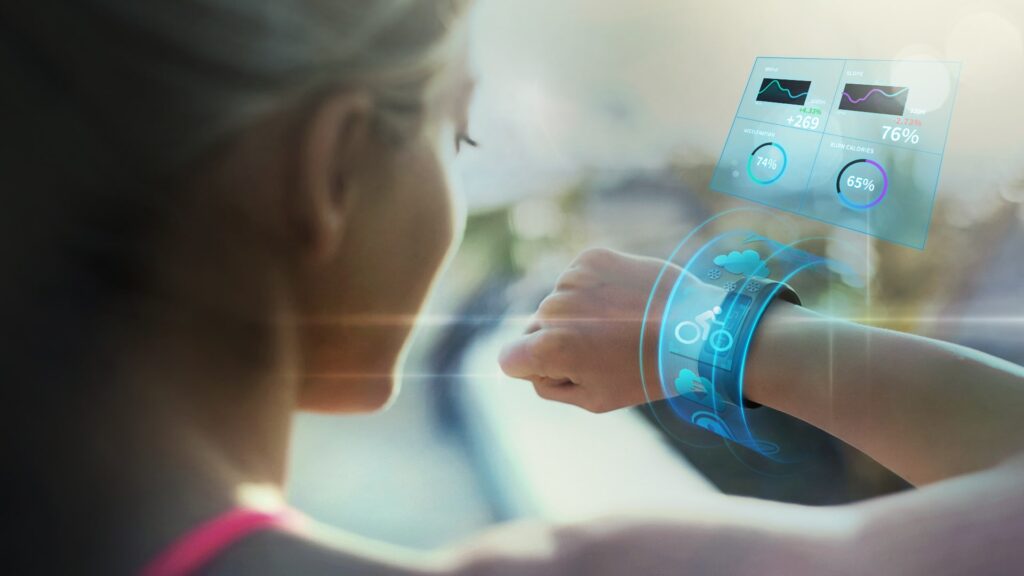Do you remember those times when the term ‘wearable technology‘ referred to wristwatches or calculator watches for the geeks among us? Boy, have times changed! Let’s dive into the fascinating world of wearable Internet of Things devices and how they transform lives today.

What are Wearable Internet of Things Devices?
-
Understanding IoT
The ability of anything with an on/off switch to connect to the Internet and interact with one another has profoundly influenced our everyday routines.
Defining Wearable Devices
Wearable devices are gadgets worn on the body as accessories or embedded in clothing. They are designed to perform advanced functions, often syncing with other devices.
The Emergence and Evolution of Wearable IoT Devices
-
Historical Context
Did you know that wearable technology has existed since the 17th century when the abacus ring was invented? However, the evolution of wearable IoT devices kicked into gear in the 21st century.
-
Modern Advances
Today’s wearable IoT devices are more innovative, faster, and more efficient. They can track health, provide updates, and even allow us to send texts or emails right from our wrists.
Key Features of Wearable IoT Devices
-
User Interface
The UI of wearable Internet of Things devices is designed to be intuitive and user-friendly, and have you ever noticed how your fitness tracker screen adjusts to your wrist movement?
-
Sensors
These devices are packed with various sensors to measure physiological and environmental parameters. Yes, that’s how your smartwatch knows you’ve climbed ten flights of stairs!
-
Connectivity
Connecting with other devices or networks is a crucial feature of these devices. Your wristwatch sends your smartphone your fitness statistics in this manner.
Categories of Wearable IoT Devices
-
Fitness Trackers
Users using these gadgets may monitor their heart rate, sleep habits, calories burned, and other data. When you have one on your wrist, who needs a personal trainer?

-
Smart Watches
Smartwatches have gone beyond merely showing time. It’s like having a mini-computer on your wrist!
-
Smart Clothing
This includes garments embedded with intelligent technology. Imagine having a jacket that can adjust its temperature based on your body temperature. Cool, isn’t it?
-
Medical Devices
These IoT devices can help monitor certain health conditions and even administer medication. Talk about a doctor at your disposal!
Implications and Applications of Wearable IoT Devices
-
Healthcare
These devices have significant healthcare applications, from monitoring heart rate and sleep patterns to alerting about potential health issues.
-
Fitness and Wellness
Whether tracking steps, monitoring calorie intake, or personalized workout guidance, wearable Internet of Things devices can do it all.
-
Lifestyle
These devices can also improve daily life, from smart glasses providing AR experiences to brilliant rings that control smart home devices.
Challenges and Future Prospects
-
Security and Privacy
With all these benefits come concerns about data privacy and security. How safe is your data on these devices? To proceed, we must find an answer to this question.
-
Battery Life and Sustainability
Ever noticed how your smartwatch battery drains faster than your traditional watch? Improving battery life and sustainability is a significant focus of future developments.
-
Future Developments
With technological advancements, the future of wearable Internet of Things devices is promising. We may anticipate more functionality, greater security, and better system integration.
Conclusion: The Future of Wearable IoT Devices
In conclusion, Wearable Internet of Things Devices represents a fascinating intersection of fashion, technology, and functionality. Wearable IoT devices are positioned at the forefront of this transition as we anticipate a time when technology is more deeply ingrained in our daily lives.
FAQs for Wearable IoT Devices
How have wearable IoT devices evolved?
Wearable IoT devices have become more innovative, faster, and more efficient.
What are key features of wearable IoT devices?
Key features include user-friendly interfaces, sensor-packed designs, and connectivity capabilities.
What are some categories of wearable IoT devices?
Categories include fitness trackers, smartwatches, smart clothing, and medical devices.
What are the implications of wearable IoT devices?
Wearable IoT devices have implications in healthcare, fitness tracking, and lifestyle enhancement.


